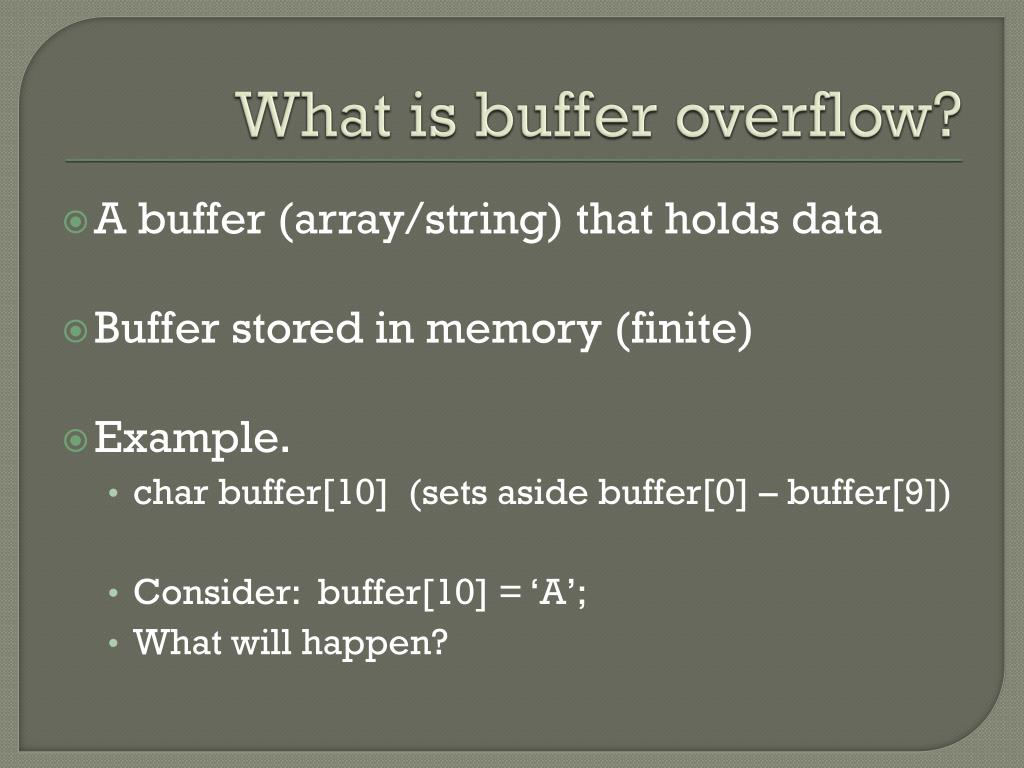

Another common method is to prevent buffer overruns by using bounds-checking that is enforced at runtime. One of the most common methods for preventing buffer overflows is avoiding standard library functions that have not been bounds-checked, which includes gets, scanf, and strcpy.
Buffer overflow 1 code#
This could trigger new actions that threaten the security and stability of the system.Īpplication developers can prevent buffer overflows by building security measures into their development code, using programming languages that include built-in protection, and regularly testing code to detect and fix errors. This enables the attacker to execute code, read data in the stack, or cause segmentation faults in the application. Format string attack: A format string exploit takes place when an application processes input data as a command or does not validate input data effectively.It involves the attack flooding a program’s memory space beyond the memory it uses for current runtime operations. Heap-based buffer overflows: A heap-based attack is more difficult to carry out than the stack-based approach.This overwrites the data on the stack, including its return pointer, which hands control of transfers to the attacker. The stack-based approach occurs when an attacker sends data containing malicious code to an application, which stores the data in a stack buffer. Stack-based buffer overflows: This is the most common form of buffer overflow attack.There are several types of buffer overflow attacks that attackers use to exploit organizations’ systems. This is more likely because they are given less scrutiny by security teams but are less likely to be discovered by hackers and more difficult to exploit. Buffer overflows can also exist in custom web application codes. Flaws in buffer overflows can exist in both application servers and web servers, especially web applications that use libraries like graphics libraries.

This will enable them to overwrite memory locations that store executable code and replace it with malicious code that allows them to take control of the program.Īttackers use a buffer overflow to corrupt a web application’s execution stack, execute arbitrary code, and take over a machine. In the event that an attacker knows a program’s memory layout, they may be able to intentionally input data that cannot be stored by the buffer. However, the extra data they issue to a program will likely contain malicious code that enables the attacker to trigger additional actions and send new instructions to the application.įor example, introducing additional code into a program could send it new instructions that give the attacker access to the organization’s IT systems. The buffer overflow exploit techniques a hacker uses depends on the architecture and operating system being used by their target.


 0 kommentar(er)
0 kommentar(er)
